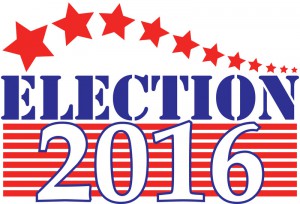What Do Republicans Want? (Why Donald Trump Is Popular, Part II) by Oliver DeMille
Published: Wed, 08/19/15
What Do Republicans Want? (Why is Donald Trump Popular, Part II)
by Oliver DeMille
 There are now three Republican parties. One is the Republican Establishment, a group that basically stands for maintaining the status quo (with one change: a Republican White House). This is the party of Nixon, Ford, Bush I, Dole, Bush II, Romney, Chris Christie, and Bush III.
There are now three Republican parties. One is the Republican Establishment, a group that basically stands for maintaining the status quo (with one change: a Republican White House). This is the party of Nixon, Ford, Bush I, Dole, Bush II, Romney, Chris Christie, and Bush III.
This group can best be described as fiscally conservative, internationally aggressive, moderate about immigration, supportive of Common Core and other centralized plans for education, and socially moderate. It is also a group that will increase spending and the size of the federal government.
A second group in the GOP is made up of Deep Conservatives: fiscally frugal on the surface, focused on limited government, aggressive on conservative social issues, strongly supportive of Israel, against Washington-run education plans, and hawkish on national security and immigration. This is the party of Mike Huckabee, Marco Rubio, Scott Walker, Rick Perry, and Bobby Jindal.
It is the Eisenhower/Reagan wing of the party. If the historical pattern holds, this group will unwittingly increase the cost and size of government, though it will likely shift spending a bit from liberal programs to more conservative priorities. It tends to talk a lot about fiscal responsibility, but when in office it just can’t seem to reverse federal spending—it always increases the debt. People in this group are often referred to as “the Republican base.”
The third segment of Republicans could be called the “Coalition of Change”. Members of this group are deeply frustrated with the status quo, with Washington’s refusal to do what the voters want, and with the fact that government grows and grows under both parties—Republicans just as much as Democrats. They dislike Common Core, No Child Left Behind, and the Department of Education, and it are split on immigration and international interventionism.
This group includes the Tea Parties, a lot of other people who feel that Republicans have repeatedly promised to repeal Obamacare and reduce the national debt but never actually do it, and also a lot of non-Republicans who don’t like the GOP brand very much and prefer to be independents (but typically vote for the Republican presidential nominee rather than the Democratic candidate).
Numerically, the third group has the most voters—and the most passionate voters of the bunch. This advantage is based largely on the enthusiasm of Tea Partiers and also the large number of independents who vote Republican during presidential elections.
But this third segment of the GOP isn’t big enough to determine the election all on its own. All three groups will be needed for any candidate to win the White House.
The bigger story is that an interesting trend is now part of the Republican landscape: over the past two decades, this third group is growing. Between 1952 and 2004, GOP primaries were a battle between groups 1 and 2 (the Republican establishment versus social conservatives); but in 2008 the third group had significant influence. Its power grew in 2010, 2012, and 2014, and it is now largely driving the Republican primaries in 2015.
What this third group will accomplish in 2016 remains to be seen. But few people are clear about what, exactly, these “different kind of Republicans” actually want. What do they really stand for? Most Americans, even most Republicans, aren’t sure.